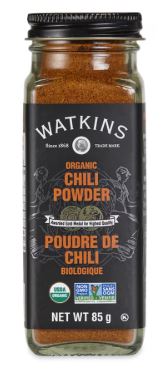|
How to Season a Cast Iron Frying Pan (And Care for It Like a Pro)
Cast iron cookware has a loyal fan base—and for good reason. These heavy-duty kitchen heroes are incredibly durable, hold heat like a dream, and can last for generations if you treat them right. But that “if” part is key. Whether you're restoring Grandma’s skillet or breaking in a brand-new pan, seasoning and proper care are essential to keep your cast iron in tip-top shape. Here's everything you need to know. 🛠 What Is Seasoning, Anyway? Seasoning is the process of baking oil into the surface of your cast iron pan. This creates a natural, non-stick layer and protects the iron from rust. Over time, this layer builds up—making your pan even better with age. 🌟 How to Season a Cast Iron Frying Pan Whether it's brand new or needs a refresh, follow these steps to season it properly: 1. Wash the Pan Scrub your pan with warm water and mild soap (yes, this one time, it’s okay to use soap). Dry it thoroughly with a towel. 2. Apply a Thin Layer of Oil Rub a light coat of a high-smoke-point oil all over the pan—inside, outside, and handle. Good choices include:
3. Bake It Place the pan upside down in the oven (use foil on the lower rack to catch drips) and bake at 350°F for 1 hour. 4. Let It Cool Turn the oven off and let the pan cool inside. Repeat this process 2–3 times for a stronger seasoning base (especially for new or stripped pans). 🧽 How to Care for Cast Iron (Everyday Tips)Once your skillet is seasoned, here's how to keep it happy: ✅ Do:
🧂 Bonus: Cooking Tips for Cast Iron Lovers
Final Thought: Build a Legacy, One Seasoning at a Time Caring for cast iron isn’t hard—it just takes a little know-how and consistency. And once you’ve got it down, your pan will reward you with years (or decades!) of perfect meals. Whether you're cooking with Watkins spices or trying a new family recipe, a well-seasoned cast iron skillet makes every dish a little more special.
0 Comments
The Magic of Chili Powder: How to Use This Flavorful SpiceChili powder is a staple in many kitchens, known for its bold, smoky, and sometimes spicy kick. Whether you’re making a pot of chili, seasoning meat, or adding depth to a sauce, chili powder is a versatile spice that can elevate your dishes. But what exactly is chili powder, and how should you use it? Let’s dive into its origins, composition, and best culinary uses. What Is Chili Powder?Chili powder is a blend of ground dried chilies and other spices, such as cumin, garlic powder, oregano, and paprika. The blend varies depending on the brand or recipe, but it generally delivers a balance of heat and flavor. Some chili powders are mild, while others pack a fiery punch.
It’s important to note that chili powder (a blend) is different from pure ground chili peppers, like cayenne or ancho chili powder. If a recipe calls for "chili powder," it usually refers to the blend, not just ground chilies. How to Use Chili Powder in Cooking
Storing Chili PowderTo keep chili powder fresh, store it in an airtight container in a cool, dark place. Over time, spices lose potency, so try to use chili powder within six months to a year for the best flavor. Final ThoughtsChili powder is an essential spice that brings warmth, complexity, and a little heat to your dishes. Whether you're making a hearty chili, seasoning meats, or experimenting with new recipes, this spice blend is a must-have in your kitchen. How do you like to use chili powder? Let us know in the comments! |
Archives
July 2025
|




 RSS Feed
RSS Feed